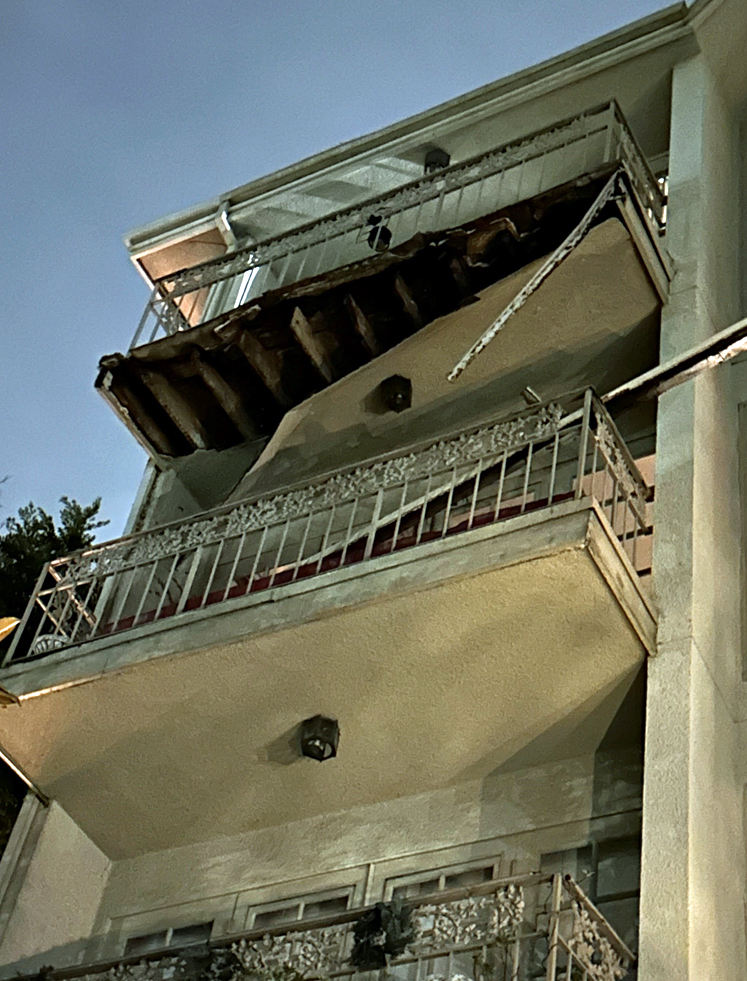 Inspections Required. In addition to reserve study inspections every three years for maintenance and repairs, condominium associations with three or more units must conduct a structural inspection every nine years. The inspection requirements do not change who is responsible to maintain, repair, or replace balconies or other elevated structures. The statute imposes additional inspection and repair obligations on HOAs as to balconies and/or elevated structures which associations are already obligated to maintain, repair, or replace.
Inspections Required. In addition to reserve study inspections every three years for maintenance and repairs, condominium associations with three or more units must conduct a structural inspection every nine years. The inspection requirements do not change who is responsible to maintain, repair, or replace balconies or other elevated structures. The statute imposes additional inspection and repair obligations on HOAs as to balconies and/or elevated structures which associations are already obligated to maintain, repair, or replace.
Waterproofing Membranes. Waterproofing membranes will eventually become worn and damaged. Damage occurs naturally over time from sunlight during the summer and rains in the winter. Problem signs to look for include:
- bubbling of the deck surface,
- cracks in the membrane,
- soft spots in the deck that sag when stepped on,
- flashing that is pulling away from the wall,
- water that does not flow to the drains.
Damage to Decks. In addition, owners can cause premature failure by moving heavy items across the surface, such as large plant-filled pots, sharp legs on chairs and tables, etc. Charcoal grills should also be prohibited--in addition to being fire hazards and creating nuisance smoke, any hot coals dropped onto the surface will burn through the waterproofing membrane. Decks should be kept clean since sand and grit, when walked on, will grind into the surface and damage the waterproofing.
Tile. Tile is not a waterproofing system. Tile and the grout used to install tile are porous. As a result, water will become trapped between these materials and the waterproofing membrane underneath. This will void the waterproofing manufacturer's warranty and accelerate the breakdown of the waterproofing materials. The resultant seepage of water into the balcony structure will lead to wood rot and attract termites. Frequently, the damage is undetectable. Sometimes, the first sign of trouble is when the owner walks onto the deck and his/her foot goes through the flooring material. The structural repairs that follow are quite costly.
Drainage. Another problem caused by tile is that it reduces the amount of space between the top of the deck surface and the threshold of the sliding glass door. That means a heavy rain that overwhelms balcony drains will quickly spill over the threshold into the owner's unit and the unit below. In addition, tile can cover the weep screed in the stucco thereby blocking drainage from the walls, leading to dry rot and mold in the walls.
Recorded Covenant. If owners are allowed to install tile on their balconies, minimum standards need to be established by the board. They need to be in writing and made part of the Architectural Standards or Rules & Regulations for the association. In addition, the owner should be required to sign a recordable covenant obligating the current owner and all future owners to maintain the balcony deck and any damage that may result.
Rules & Regulations. If owners are responsible for maintaining their decks, guidelines need to be written into the association's rules to cover the following items:
- what to look for when inspecting the decks for damage,
- how to avoid damage to the waterproofing membrane,
- how often the deck should be resealed (waterproofing products such as Dexotex require recoating every 5 years--sooner if there is heavy usage or damage from patio furniture, etc.),
- the kinds of waterproofing systems that are acceptable to the association,
- prohibited deck systems, such as carpet and tile,
- deck drain maintenance, and
- deck to-wall flashing maintenance.
Confusing Maintenance Duties. Association documents routinely assign maintenance duties between owners and the association. Unfortunately, exclusive use common areas are often left out or muddled. For example, in condominium developments, older CC&Rs are vague or silent when it comes to balconies.
Old Default Provision. To resolve the problem, the Davis-Stirling Act created a default provision that assigned exclusive use maintenance to owners. The Act did not define "maintenance" but everyone previously understood it to include repairs since most dictionaries define it as such.
New Default Provision. Starting January 1, 2017, a new default provision went into effect. Unless an association's CC&Rs state otherwise, owners continue to be responsible for maintaining their exclusive use areas but the association will be responsible for repairing and replacing them. (Civ. Code § 4775(a)(3).)
Structural Elements. Unless the CC&Rs clearly state otherwise, the structural elements of balconies are the responsibility of the association to repair and replace, even when the balcony is described as part of a unit. This is because the ownership of a condominium balcony is generally described as airspace bounded by the interior planes of the balcony. Thus, the structure remains common area that the association is obligated to repair and replace.
Owner Damage. See Liability for Balcony Damage.
Stair Maintenance. See information about Stair Maintenance.
Inspections. See Balcony Inspections.
Recommendation: To avoid legal problems, associations should should:
- Adopt maintenance guidelines that clearly define an owner's duties for the waterproofing portion of balconies. Those duties must harmonize with their CC&Rs.
- Create a Maintenance Chart that clearly defines duties.
- Amend Your CC&Rs if they are unclear about who maintains the waterproofing elements on your balconies. Each association will need to decide for itself whether it wants the association to maintain deck coatings or assign that task to owners. That decision must be clearly outlined in the CC&Rs.
ASSISTANCE: Associations needing legal assistance can contact us. To stay current with issues affecting community associations, subscribe to the Davis-Stirling Newsletter.